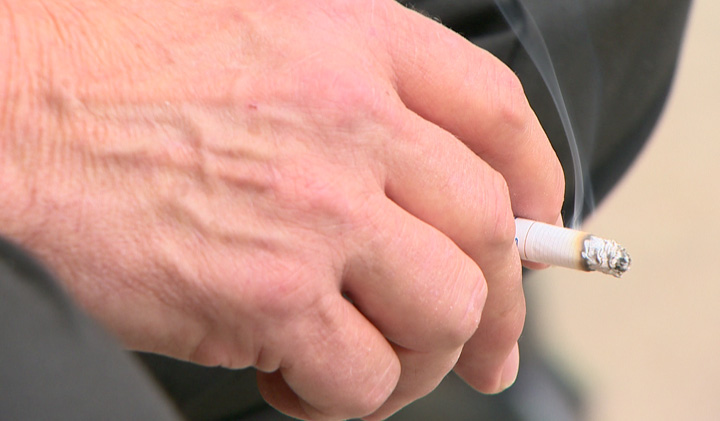A number of health organizations are calling on the Saskatchewan government to update provincial tobacco laws to deal with high smoking rates in the province.

The latest data from the 2017 Canadian Tobacco Alcohol and Drug survey released in October 2018 found 21.9 per cent of youth aged 15 to 19 in the province currently smoke.
That number jumps to 23.4 per cent of those aged 20 to 24.
The Saskatchewan Coalition for Tobacco Reduction said it has been nearly a decade since provincial tobacco laws were updated.
Issues such as the growth of flavoured tobacco, and the introduction of e-cigarettes and vaping make changes to the legislation necessary said Donna Pasiechnik, a health policy analyst for the Canadian Cancer Society.
“Most other provinces, as well as the federal government, have modernized their tobacco laws to address issues such as vaping and flavoured tobacco,” Pasiechnik said in a statement.

Get weekly health news
“Saskatchewan has not despite growing public support for these measures and repeated calls from health groups. Our high smoking results are the result of our government’s inaction.”
WATCH BELOW: Phillip Morris says it is phasing out tobacco cigarettes

The coalition said the sale, promotion and use of vaping products should be regulated like it is done in eight other provinces.
It is also calling on a complete ban on flavoured tobacco products, increasing the smoking ban in more outdoor places, and increasing the age to purchase tobacco and vaping products to 21 – or at least 19 as it is for alcohol and cannabis.
They also want an increase in tobacco taxes, and require tobacco retailers to be licenced and pay an annual fee.
“The plan we have set out would not only reduce smoking rates but would provide the money needed to fund a provincial Tobacco Control Strategy by charging tobacco manufacturers and retailers a levy to sell this deadly consumer product,” said Jennifer May, vice-president of community engagement for The Lung Association.
Tobacco use kills an estimated 1,500 people yearly in Saskatchewan, and places a $200 million burden in direct costs on the health care system, according to the coalition.


Comments